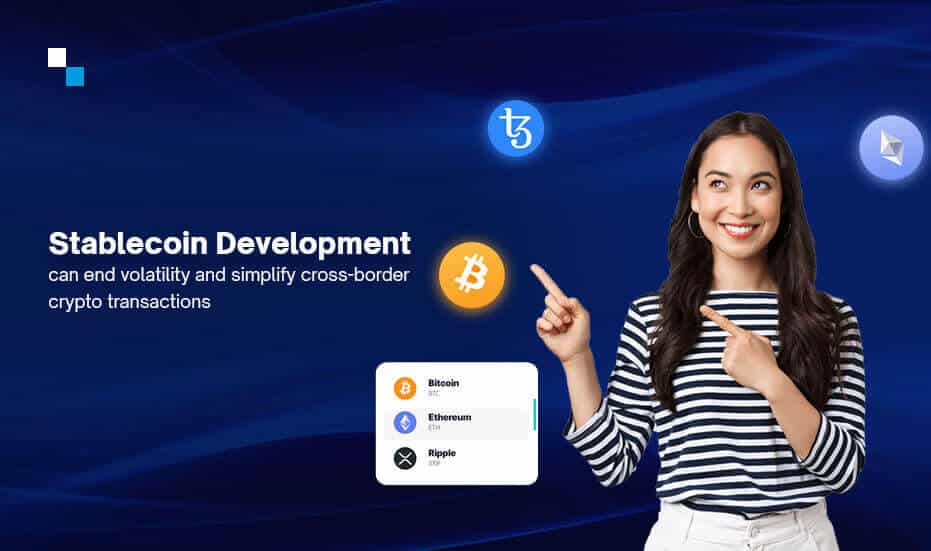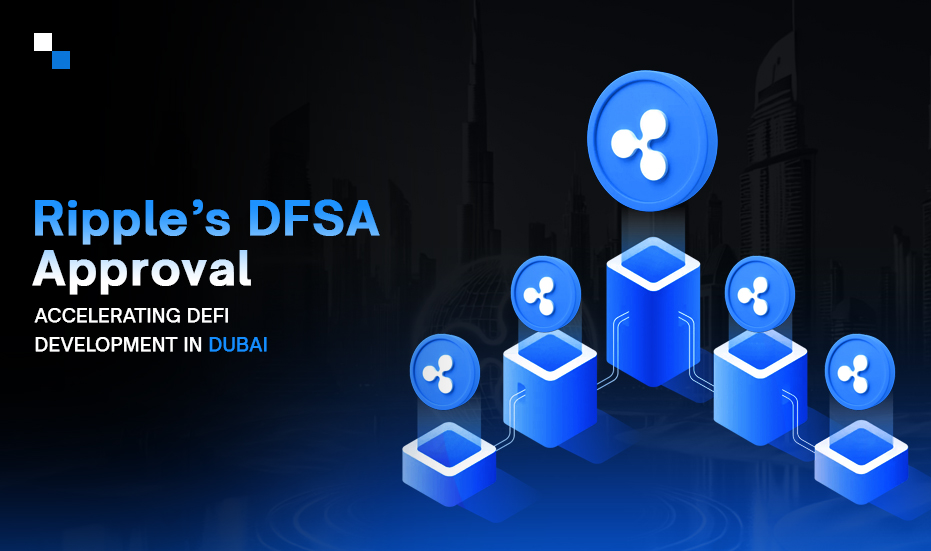
Underpinning the Importance of Bitcoin Wallet app Development
August 24, 2022
Give More Power To Your Business With Crypto Token Development
August 25, 2022The global financial system has become increasingly dependent on cross-border trade and monetary exchange. Although,the existing mechanism is fully functional and serves its purpose, there are some bottlenecks that can be fixed by utilizing virtual currencies and blockchain-based solutions. According to the report published by the World Bank, the global volume of cross-border money exchange is expected to grow by 4.2% in the current fiscal year and will reach a value of $ 630 Billion.
Blockchain networks are designed to be reliable, free of censorship, with lower transaction costs, and most notably, they can execute transactions immediately with fool-proof technology. Blockchain networks and their native cryptos are also global in scope. Virtual currencies use inter-connected nodes to validate trades instead of centralized institutions. In this blog, we will explore how Stablecoin development can help in cross-border transfers more effectively and how Stablecoin development services can do it for us.
Lets us understand what stablecoins are.
In the larger realm of digital currencies, stablecoins are tightly linked with real-world value and worth. In general, the value of digital currencies keeps changing. Thus, it might normally be impractical for enterprises to use as a medium for cross-border exchange. However, stablecoins don’t have this problem.
Since they are pegged with fiat money or rare metals like gold, stablecoins are stable. This implies that the total amount you transfer using a stablecoin will equal the amount your receiver receives, less any tiny commissions charged by the intermediary.
Importantly, you need not be concerned about forex rate fluctuations driving up the overall cost of the item or brokering a Business – to – business deal among two nations with multiple banking institutions charging a hefty fee.
Let us understand the bottlenecks of the current cross-border money transfer mechanism:
-
- Expensive Transfer services
In the traditional financial system, many middlemen are required to move funds from one territory to the next. Every intermediary charge for their channel, making cross-border payments infamously costlier. Additionally, administrative expenses keep increasing, and there will be Forex charges associated with currency conversion.
-
- Protracted transactions
Conventional bank transfers for cross-border payments typically take five to seven working days to execute the transfer, which is a fairly long response time compared to local payments that are processed almost instantly. Yet again, this is due to the sheer number of parties engaged in a single trade.
-
- Security concerns
Banks, like individuals, naturally would like to feel secure knowing their funds are secure while transacting internationally. A bank may be unable to cover up the stolen cash if a hacker successfully steals them through a cross-border transfer gateway. Such damages may be extremely catastrophic. Cross-border transfer networks regrettably commonly encounter serious safety lapses. Every nation has laws; therefore, the cross-border payment mechanism is susceptible to hacking whenever money crosses into a nation with weaker identity and security controls.
How Stablecoin development provides an ideal solution for a cross-border fund transfer?
-
- Confidentiality
Instead of tying transactions to the owners’ identities, stablecoin transactions are linked to a random pattern of characters, also known as cyphertext. A stablecoins or associated contracts possession cannot be linked to entities or people. Stablecoins are better suited to provide privacy because they don’t have business-related or personal data connections.
-
- Safety & Protection
The security that stablecoins provide is one of its most important characteristics. Stablecoins can be kept secure in virtual wallets with an encryption key. This is the reason why the stablecoin owner can only obtain the linked funds as a condition. Customers also can increase security measures for their storage systems by utilizing cutting-edge secure protocols.
Develop your Own Stablecoin on Cross-Border Remittance
Schedule Free Demo-
- Absence of a Middlemen
One of the key characteristics of stablecoins is the absence of middlemen. Stablecoins eliminate the costs and restrictions associated with federal administration, legislation, and other centralized bodies, much like cryptos do. Unlike other cryptocurrencies, holders of stablecoins have the certainty of security because they are backed by stable commodities like fiat currency or rare metals like gold.
-
- Decentralization
Decentralization, one of the fundamental features of a stablecoin architecture, is another crucial function of stablecoins. You lack the power to manage the stablecoin’s circulation. Additionally, stablecoin trade is not limited to a single location, eliminating the chance of delays following harmful phishing activities. The transactional information is kept by each stablecoin owner in the system, guaranteeing that it is distributed throughout the system.
-
- Working with dApps
The versatility of using stablecoins with different dApps is the next significant advantage of stablecoin capabilities. Stablecoins can be used by enterprises that use smart contracts to increase operational cost stability. However, the compatibility of stablecoins with dApps may present improved project management opportunities. Stablecoins are simple to program and may be customized to meet the demands of businesses or individual users.
Let’s check out the step-by-step process of stablecoin development:
Given below steps elaborate on various stages of stablecoin development. These steps seem to be easy for once, but in reality, they are complex procedures that require a specific set of skills and expertise which can only be taken care of by Stablecoin development services.
Step 1: Goal Setting
Define your goals and objectives when building a stablecoin for cross-border transfer solutions. When building a stablecoin, you must be clear about your company goals. For instance, producing security or algorithmic stablecoins is ideal if stablecoins are a long-term venture for you.
Step 2: Discover which blockchain network is best for launching your stablecoin
Earlier, stablecoins were only allowed to be launched on Ethereum, but that is no longer the case. Stablecoins were mostly introduced on Ethereum between 2016 and 2018; however, there are now many more possibilities due to their rising prominence. Stablecoin initiatives began to emerge in 2019 due to new players entering the blockchain market, including Tron, EOS, and others.
Despite these advancements, almost 50% of stablecoin initiatives announced in 2019 and 2020 were based on Ethereum. You may easily sell or acquire stablecoins thanks to the improved compatibility and increased transactional capacity it provides.
Step 3: Take the necessary actions to maintain liquidity
Your stablecoin rollout doesn’t end here. Maintaining the availability of funds is necessary, or the entire purpose of possessing it would be defeated. To do this, you need to incorporate an automatic synchronization system that provides you with everyday exchange rates and benchmark rates. The third method of maintaining liquidity is to divide trading charges among both the valuation of the stablecoin and the worth of the liquidity reserves.
Step 4: Name the stablecoin
Your stablecoins are your money. Thus, they require a suitable style and aesthetics that effectively communicate the benefits of your coins to shareholders. With the help of systems engineering, we imply that you have a clear plan for how owners of your tokens will execute trades. By aesthetics, we mean having a useful framework, such as a smartphone app or a site that enables customers to communicate with your tokens invisibly.
Step 5: Embedding the blockchain platform and launching the product
The last step is to generate and connect your ready-to-use layouts and aesthetics with a blockchain-based system. This is essential to make your cryptos more secure and safe. After several testing sessions, stablecoins can finally be introduced to the primary market.
Conclusion
Stablecoins are most likely to become the standard method of payment in the coming years. Therefore, it would be worthwhile to invest in the development of stablecoins. A novice can get scared while contemplating the complex procedure for developing and releasing such a cryptocurrency. It would be better to hire experienced professionals for stablecoin development that can handle the process of developing stablecoins with great perfection.
‘Antier Solutions’ is a renowned face in the blockchain industry, and it offers stablecoin development services to match your budget and requirements. Try us now!



